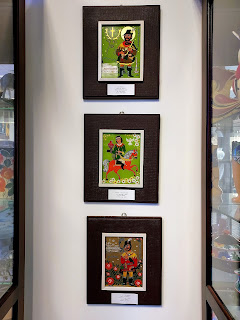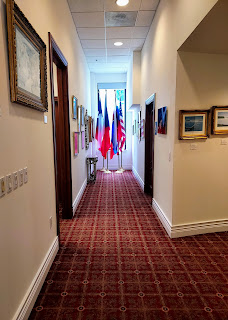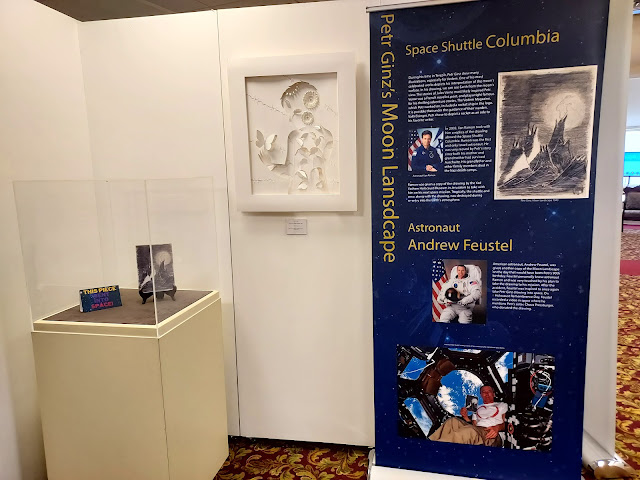To my utter delight, the old mill was open for viewing, and there was a ranger to answer questions. We ogled the old machinery and felt the building quake when a docent turned on the water turbine in the basement. Over four floors, there are sifters and grinders and baggers for wheat, buckwheat, oats, and corn.
The first mill, with a vertical waterwheel, was built in 1852. It burned in 1867. The covered bridge was built in 1874, and after Captain Thomas McConnell bought the replacement mill in 1875, he fitted it with more efficient horizontal turbines. It ground grain until 1928, when more modern mills put it out of business.
That's the park's namesake, but here is the mill's most famous denizen, Mose Wharton (1860-1954), who was born into slavery, hired by Captain McConnell to work at the mill, and tended it faithfully until he was 92. This collection of photographs includes memories of his boxing prowess, practical jokery, and that he rescued or retrieved people who fell (or jumped) into Slippery Rock Creek.
In addition to the historical placards, there were some photos, posters, and poems, like this one.
"The Mill," by Joyce M. Tait
I am the mill.
Melt, winter snow...
Fill my pond and let
Me catch your flotsam
On my screen.
And churn the river's foam
That drives the great
Shaft home.
Flow, river...
Though sluice and millrace,
Making of my wheatstone voice.
A steady song.
Fill, miller...
My hopper to the brim
With sacks of ripened grain
I'll grind to life.
Fly, grain dust
Abrade my wooden cogs and gears
To satin's bright patina,
Let me glow...
I am the mill.
In defiance of the rain clouds and drizzle, we set off along the alpha falls trail under the protective covering of the trees, remarking on the moss-covered boulders, antediluvian ferns, and remarkably soft pine needles underfoot.


Upon reaching a parking lot, we stopped for a water break, consulted our map, and set off along the country road, looking for the waterfall. When we reached a major intersection with no sign of the trail, we doubled back and picked it up from a different lot. After climbing the same set of stairs to the first parking lot, we almost despaired of finding the falls, when on our way down I noticed two men driving remote-controlled cars on an unmarked spur: we veered off and shortly discovered: the fall!
Despite the weekend's wet weather, Alpha Falls was just trickling. But we were gratified to have found it, or else we might have rued the 1.5 hours tramping in the stifling humidity. Neither of my traveling companions was familiar with the TLC classic from 1994, "Waterfalls" until I tried to sing the chorus to them:
Don't go chasing waterfalls
Please stick to the rivers and the lakes that you're used to
I know that you're gonna have it your way or nothing at all
But I think you're moving too fast
After we returned to our car, it was a quiet ride home for homemade dinner topped off with soft serve from a local shop. I'll leave you with one more poem from the mill.
"Emotions of Wood and Stone," by Karen Nicely (July 1984)
Old Mill, what history have you seen?
Has anyone died within your walls?
What conversations you must have heard!
Can you tell me some?
Knowledge of life and love have you stored over the
years--
What problems were solved while contemplating
from your windows the wondrous scene below?
Will I absorb this power if I lean against you long
enough,
If I study each and every stone of your exterior?
How does it feel to have once been the home of
deals and transactions, tensions and decisions
And now to have become a place of relaxation?
No longer do shrewd businessmen or friendly
neighbors do their buying and selling within you.
Young lovers and ancient romantics, children and
students now populate your wooden floors and
rickety steps.
Are you sorry for the change or thankful for the
rest, Old One?






















































